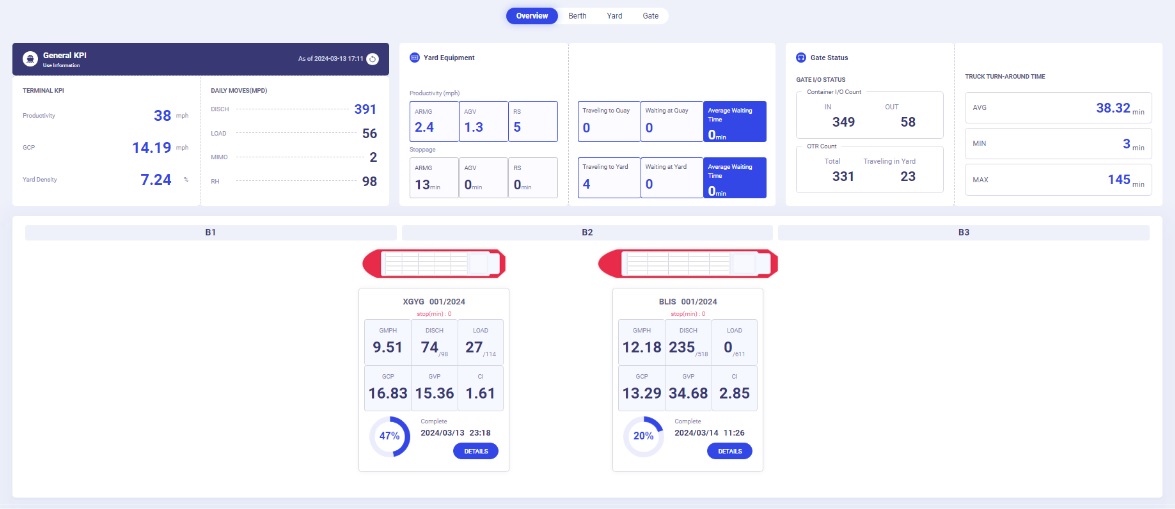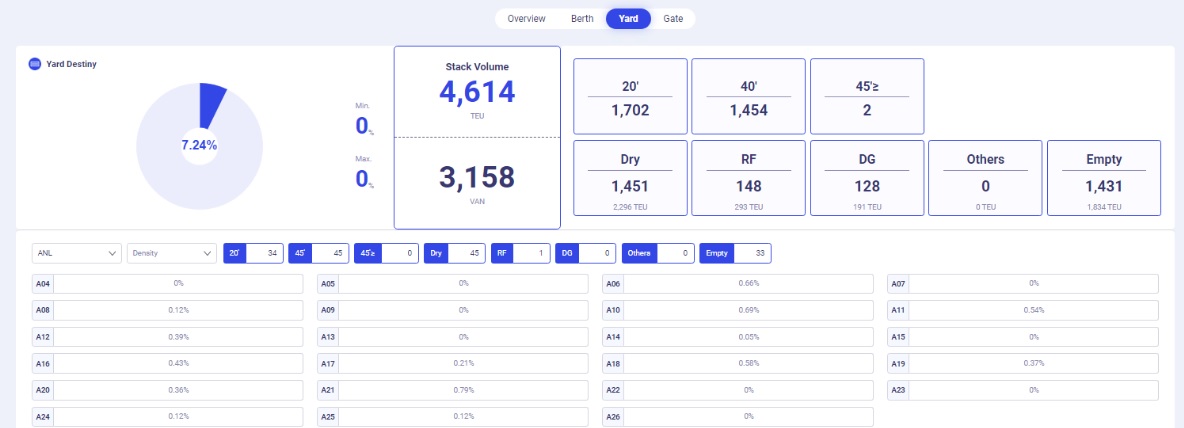Press Release
The hub of CLT press releases
Dongwon Global Terminal (DGT) announced opening the first
fully automated terminal in South Korea on 5th April. DGT, the 2nd
to 5th operation phase of the west container harbor in Busan New
Port, is evaluated as a terminal that has set milestones for terminal logistics
history in South Korea by applying domestic technology in various automation
equipment and operation systems. CyberLogitec’s efforts as an IT solution provider,
such as terminal operation systems, are helping to success in DGT
implementation. As a terminal logistics specialized IT solution provider,
CyberLogitec has proven its path domestically and globally, once again
demonstrating the technology in the DGT case.
OPUS Terminal, seize the efficiency and safety
DGT has introduced rare and cutting-edge equipment like AGV(Automated Guided Vehicle), ARMG(Automated Rail Mounted Gantry) and DTQC(Double Trolley Quay Crane); hence, the integrated control technology was required for the equipment.
CyberLogitec has more than 8 implementation references of
Terminal Operation System(TOS) in Automated Terminals both domestic and global.
The implementation references include horizontal and vertical types, and
recently, the world’s first U-Type (Type that supports a side loading method in
which AGV enters the block in vertical-type) fully automated terminal case was
added to the reference list.
Unlike other terminals, a fully automated terminal
applies unmanned equipment such as AGVs, Double Trolley Quay Cranes and others.
To operate the equipment smoothly, an optimal work plan considering each
equipment’s feature and workflow and the development of a solution capable of
being controlled thoroughly are needed.
DGT applies OPUS Terminal Enterprise as a terminal
operation system, Terminal Logistics Controller(TLC) which makes each piece equipment
capable of operating optimally, and OPUS
DigiPort’s IoT platform & data center for data integration management. By
applying organically connecting OPUS Terminal and each solution and module to
the entire terminal, CyberLogitec received an evaluation that achieved
automation efficiency, safety, and productivity as well.

△OPUS DigiPort’s dashboard which applied to DGT. You can see the real-time
terminal status information.
Work optimization implementation by real-time data management
DGT was the first in South Korea to introduce the Double Trolley Quay
Trolley(DTQC.).
DTQC is the equipment for loading and unloading containers to and from
container vessels (sea-side) and harbors (land-side). The existing equipment is
a single trolley that moves between the vessel and land, yet a double trolley
can process more output by two trolleys, which are located one on the vessel
and the other one on the land, associated with the platform. Generally, double
trolleys are known to improve efficiency by 15% compared to single trolleys.
CyberLogitec applied the operation solution for automation implementation to
DTQC. Utilization of the implementation gives the crane the remote-control
capability with monitoring. Hence it could get a wide field view as well as a safety
accident prevention effect.
The importance of stable data processing capability cannot be overstated
when it comes to operating automation equipment smoothly. The equipment
generates a large amount of data every moment, and managing and judging job
orders 24/7 based on this data could easily overload the operation system and
cause errors. Therefore, the establishment of an effective data relay and data
processing method is not just a requirement, but a necessity to ensure the
stability in system operation.
CyberLogitec utilized an IoT platform to relay the various types of data
from the automation equipment ECS(Equipment Controller System), RFID installed
in the terminal and vehicles passing the terminal gate, and then connecting
interface. Due to the applied installation, the DGT operation
system instructs optimal job orders through real-time container and vehicle
location tracking, estimation of the vehicle’s arrival time at the block, and
weight value setting as per the types of work in the terminal.

△OPUS DigiPort’s dashboard which applied to DGT. You can see the real-time
terminal status information.
OPUS Terminal, which is applied in DGT as an operation
system presented by CyberLogitec, prepares work plans based on collected
information in advance, including EDI, assigns the equipment to use, and then
manages overall operation to allocate the work on a real-time basis. At this
time, prevention of equipment collision, interference, deadlock (Condition in
which the equipment is standing still until another equipment to complete the
work) is basic.
CyberLogitec plans to deliver perfect support
for the operation of DGT and, based on its advanced technology, contribute to
the successful implementation of terminal automation projects both domestically
and globally.
Source : Korea Logistics News (https://www.klnews.co.kr) / 2024. 5. 27


